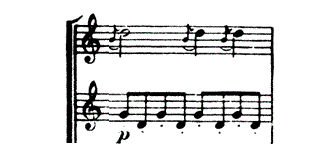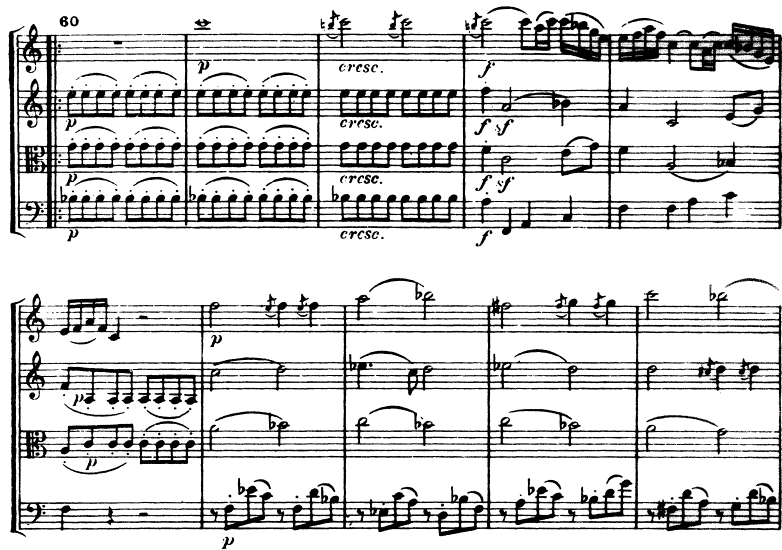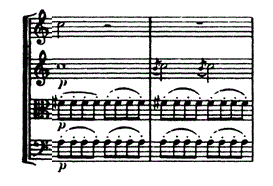More than a Sales Pitch: On the Newness of Haydn’s Op. 33 Quartets
Joseph Haydn claimed on various occasions that his Op. 33 string quartets were composed in a “new and special” manner. Some scholars have dismissed this phrase, which comes from a series of letters Haydn sent to prospective patrons in Dec. 1781, as a mere sales pitch. Others contend that this declaration refers to something truly innovative about the style of these quartets. Since composers of the time made few statements about the nature of their own music, such an unusual comment deserves serious attention. The context within which Haydn composed Op. 33 is certainly significant; this piece is one of the first works he composed following the lifting of a contractual ban regarding the marketing of his works. However, we find that Haydn’s claim is best illuminated through exploration of the music itself. Through critical examination of the music, we will identify a number of musical attributes that make Op. 33 new and special in comparison with his previous collection of quartets, Op. 20.
A particular letter written by Haydn to advertise Op. 33’s quartets includes the “new and special” declaration, but also contains a phrase that deserves attention: “I have written none for ten years.”[1] It should be noted that ten years is a slight exaggeration, because only nine had lapsed from Op. 20 (1772) to Op. 33 (1781). However, his mentioning of this suggests that Haydn considered the passage of time an important element, a gap of nearly a decade spent delving into other forms of music. Haydn had started to write operas for Prince Esterházy in 1766, and this trend continued throughout this gap, petering out in the 1780s. Larsen says that “Haydn’s activities as an opera composer are of a considerable influence on his further development, although initially they did not absorb too much of his compositional power.” It seems he was conventional in following established opera buffa traditions.[2] Although Larsen was speaking of the period 1765-72, prior to Op. 20, there is no reason to suspect that opera had any less effect on Haydn’s development in the nine years after 1772. Rosen states that the quartets in Op. 33 “are informed throughout by the pacing of comic opera.”[3] Sutcliffe has suggested that further development occurred “In some of [Haydn’s] symphonic slow movements from the 1770s, [where] we encounter a manner that is not necessarily humorous,” but rather “characterized by unusual gestures or oddly timed events.” Such moments “produce an expressive ambivalence that is in fact one of the strongest attributes of Haydn’s art.”[4]
As previously mentioned, stylistic development was not the only evolution that Haydn endured, for there was a dramatic change in his contract under Prince Esterházy, in 1779. A significant alteration was the removal of the following statement: “The Vice-Kapellmeister will be bound to compose such music as his Serene Highness shall command, and not let such compositions be communicated to any other party, much less be copied, but they shall remain for his use only and his rightful ownership, and he shall not, without knowledge and permission, compose for any other person.” The revised contract allowed Haydn to make money by distributing his own manuscripts to whoever wanted them. For the first time, he could directly reach his audience: the emerging market of middle class musicians who were the “standard bearers of the Enlightenment.”[5]
Existing scholarly views regarding the newness of Op. 33 are contentious. Sandberger was the first to argue that Op. 33 was indeed “new and special,” and Landon is perhaps his most diehard supporter, or at least the most vehement: “[T]o anyone with a pair of ears it should be obvious that Op. 33 is certainly written in a new and special way.”[6] Rosen agrees, adding that “[Haydn’s] last series of Quartets, Op. 20. . . had circulated widely and was well known: he must therefore have thought that his claim had some chance of seeming plausible.”[7]
Webster opposes this view, believing “It is high time we abandoned Sandberger’s tale, crisis, trial, triumph, and all.” He argues that a great deal of Romantic thinking has been projected anachronistically on to the life and works of Joseph Haydn.[8] Moe disagrees, although his praise for Op. 33 is far more measured than that of more enthusiastic proponents of its newness. He mentions Op. 33’s “light, popular touch, and the subtle complexities that are hidden behind a false appearance of simplicity.”[9] Sutcliffe takes perhaps the most inclusive approach, saying “There is. . . no problem in accepting both senses of the phrase [“new and special way”]. If Haydn’s musical technique had advanced in the intervening nine years, then so had his business acumen.”[10] Regardless, we can see for ourselves within the music. Sutcliffe says it best: “the claim to a ‘new and special way’ in the writing of these quartets is argued and won within the context of the works themselves.”[11]
[1] The translation of the letters used here was done by Dr. Ben Korstvedt.
[2] Jens Peter Larsen, Handel, Haydn, and the Viennese Classical Style (Ann Arbor: UMI Research Press, 1988), 112.
[3] Charles Rosen, The Classical Style (New York: Norton, 1971), 119.
[4] W. Dean Sutcliffe, “Expressive Ambivalence in Haydn’s Symphonic Slow Movements of the 1770s,” The Journal of Musicology 27 (2010): 85.
[5] David P. Schroeder, Haydn and the Enlightenment (Oxford: Clarendon, 1990), 56.
[6] H.C. Robbins Landon, Haydn: Chronicle and Works, vol. 2 (Bloomington: Indiana University Press, 1976), 578.
[7] Rosen, Classical Style, 116.
[8] James Webster, Haydn’s ‘Farewell’ Symphony and the Idea of Classical Style (Cambridge: Cambridge University Press, 1991), 347.
[9] Orin Moe, “The Significance of Haydn’s op. 33,” in Haydn Studies: Proceedings of the International Haydn Conference, Washington, D.C., ed. Jens Peter Larson et al. (New York: Norton, 1981), 445, 449.
[10] W. Dean Sutcliffe, Haydn: String Quartets, Op. 50 (Cambridge: Cambridge University Press, 1992), 19.
[11] Ibid., 23.






